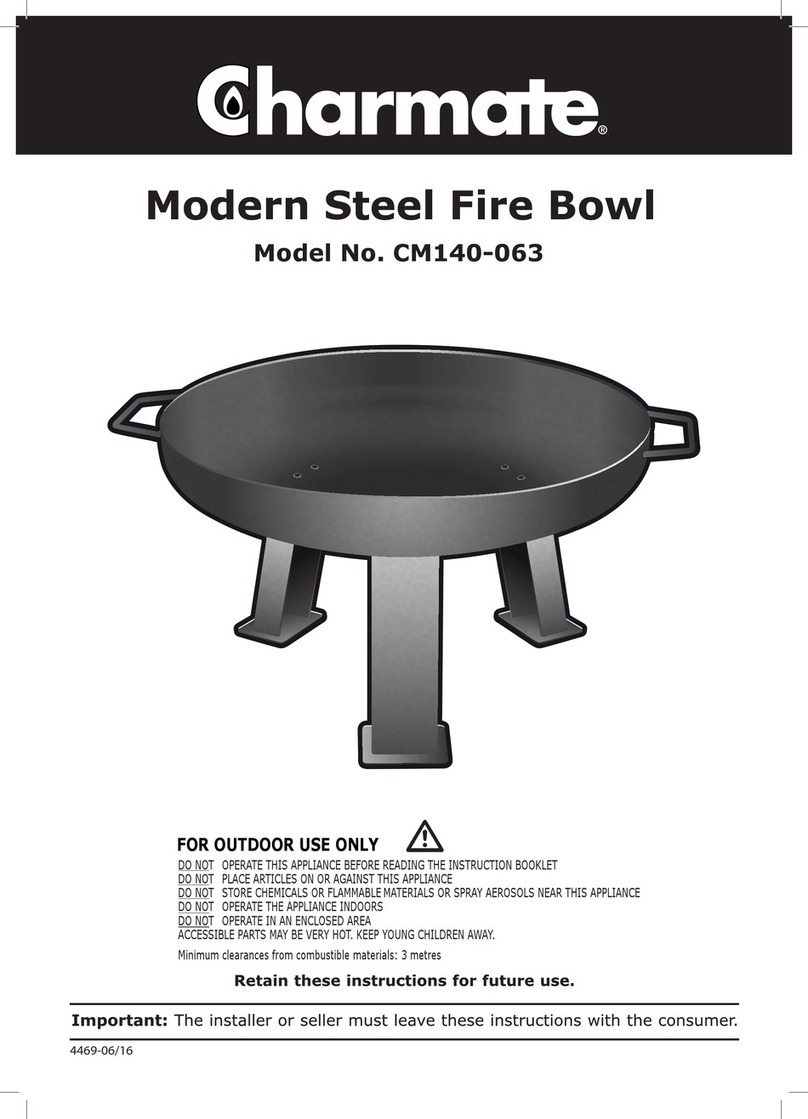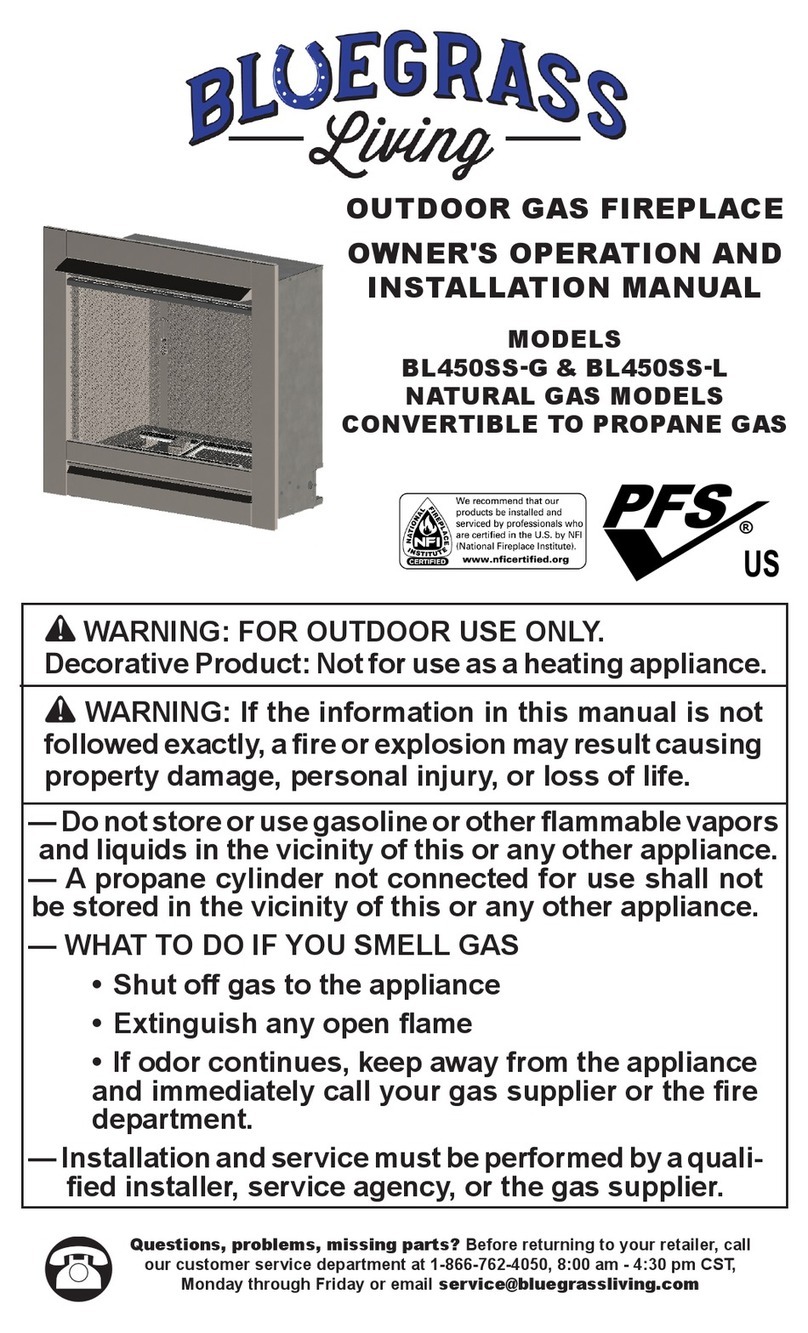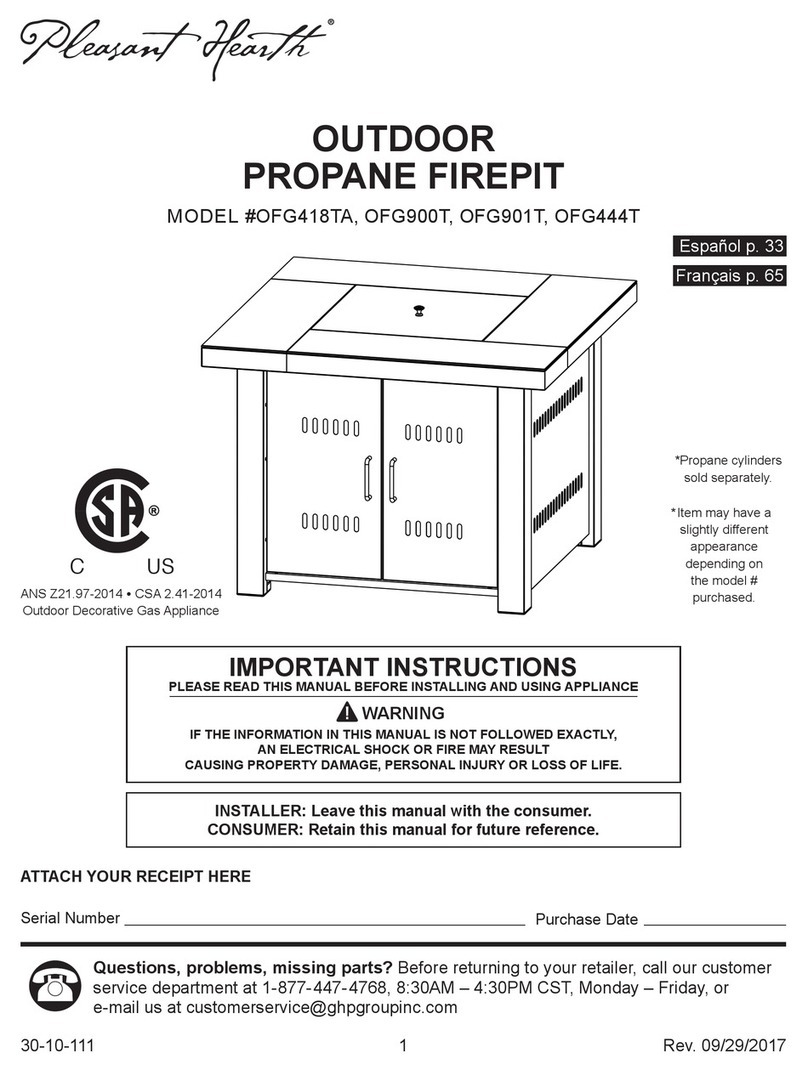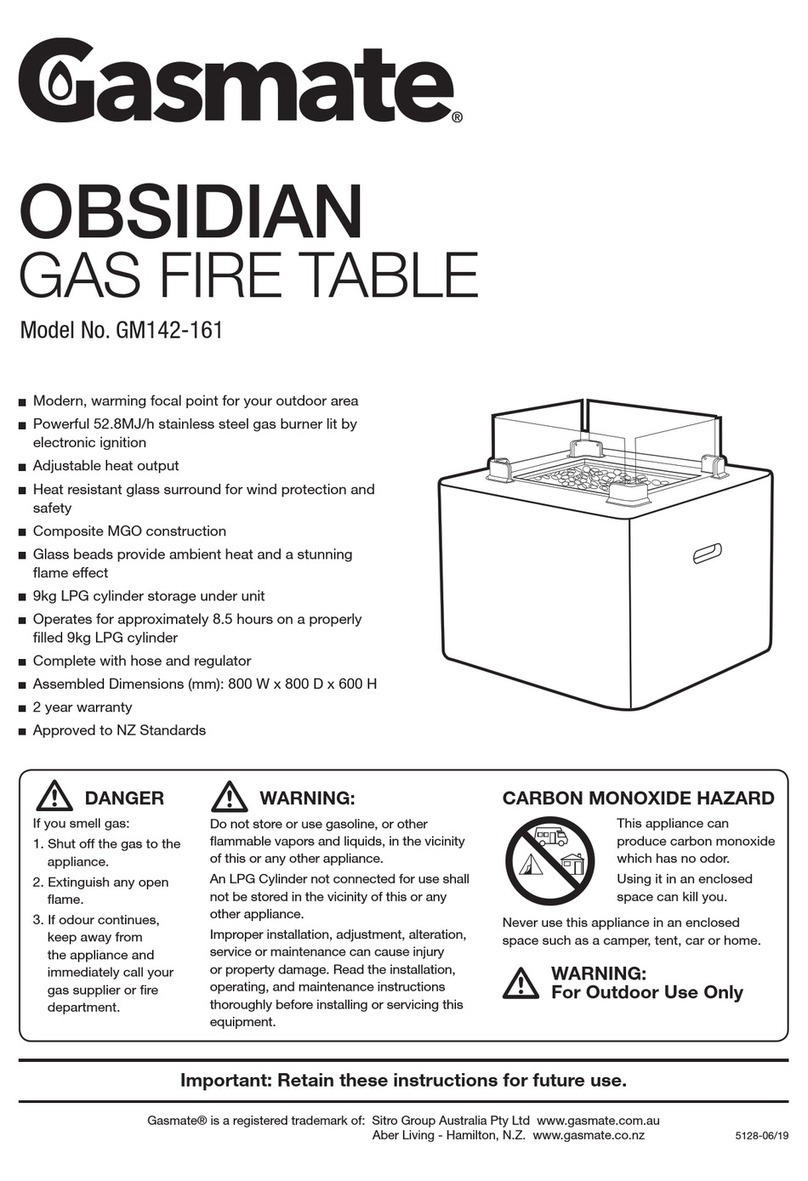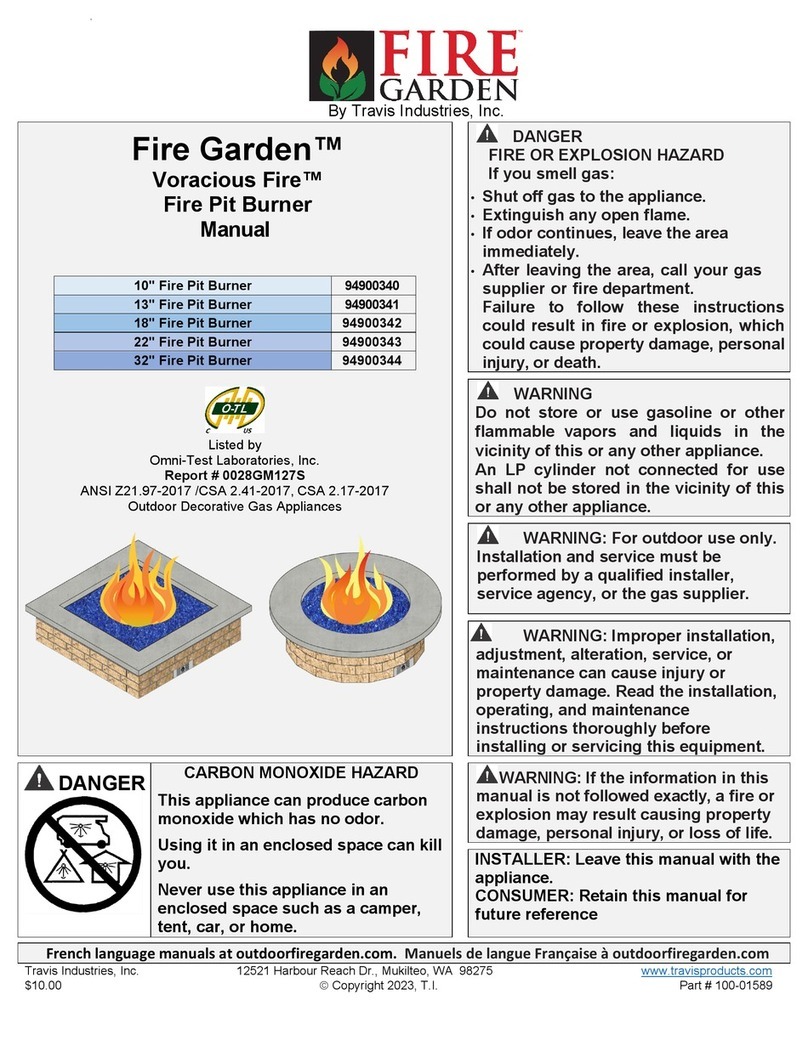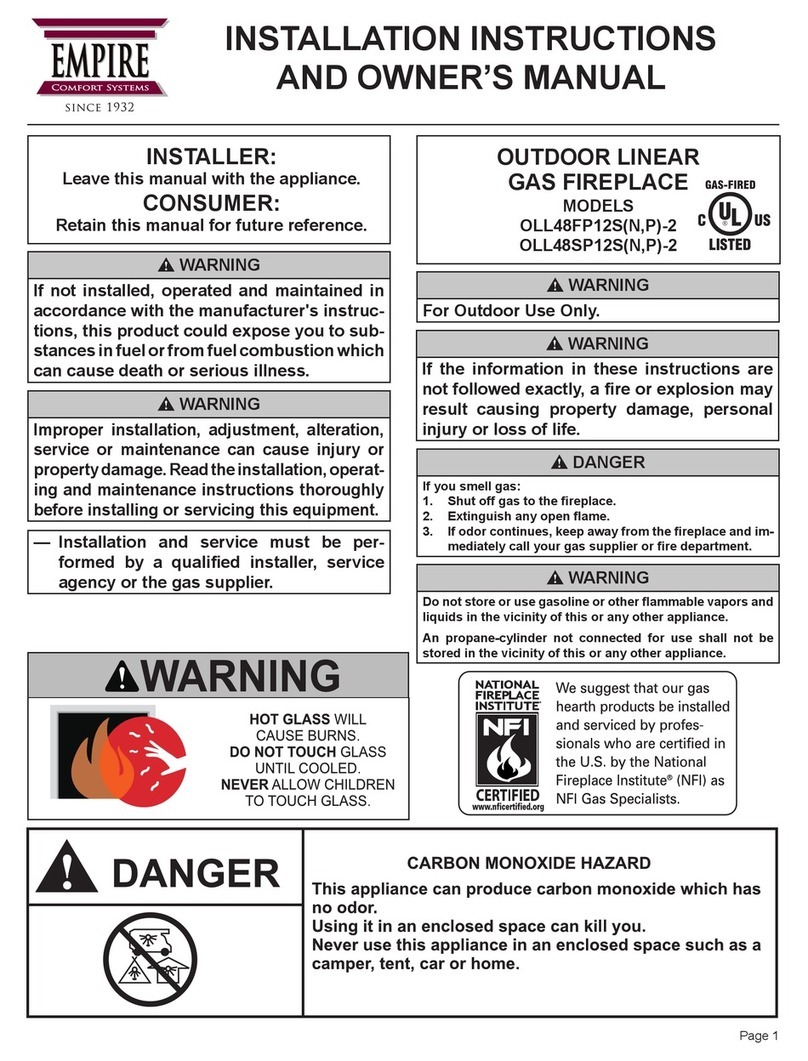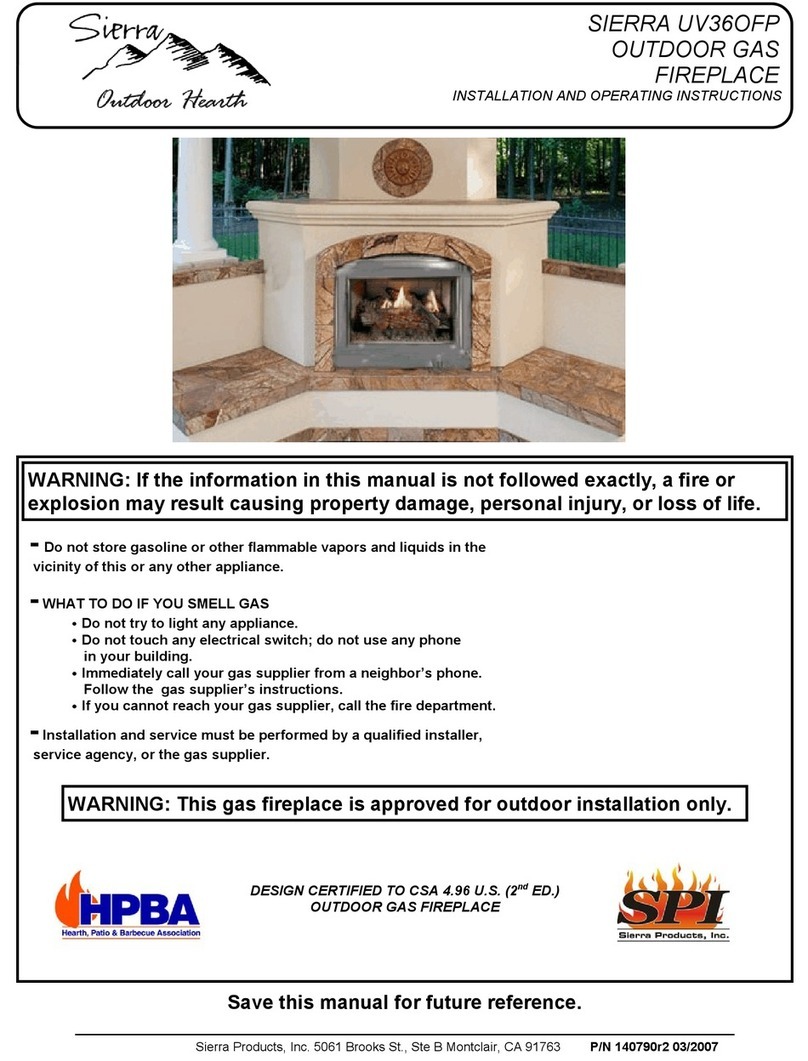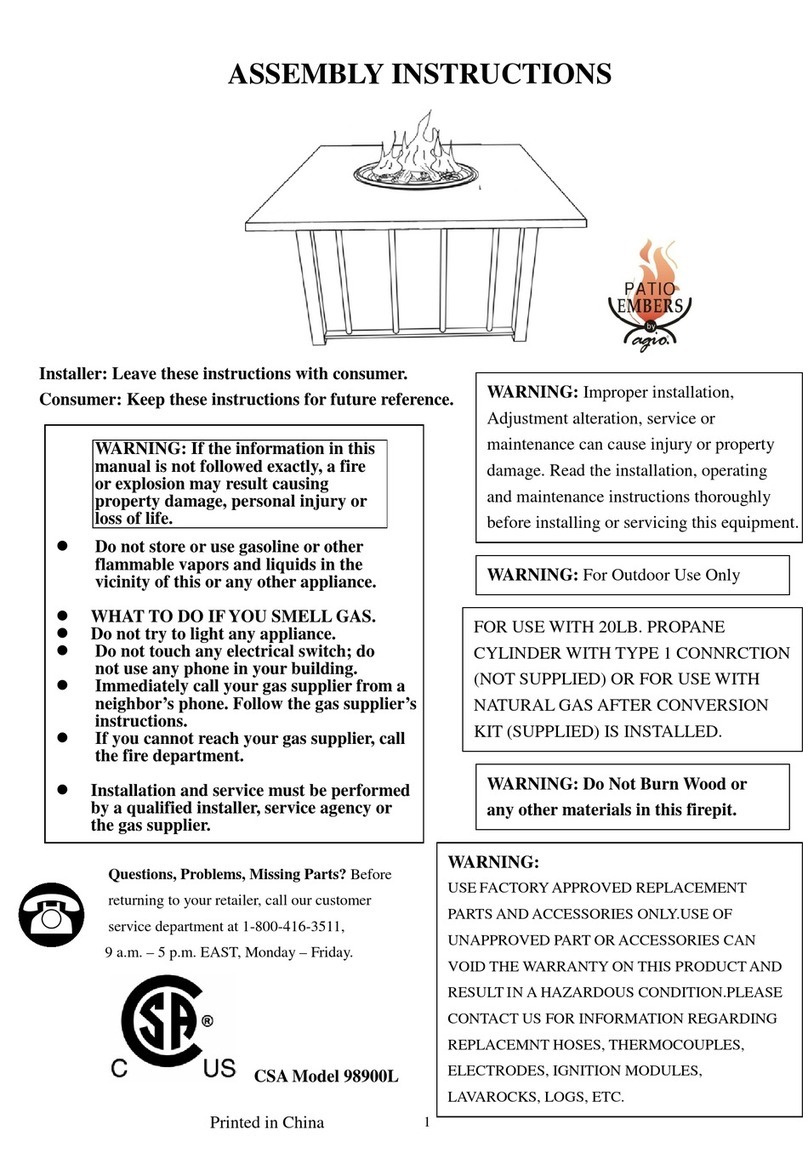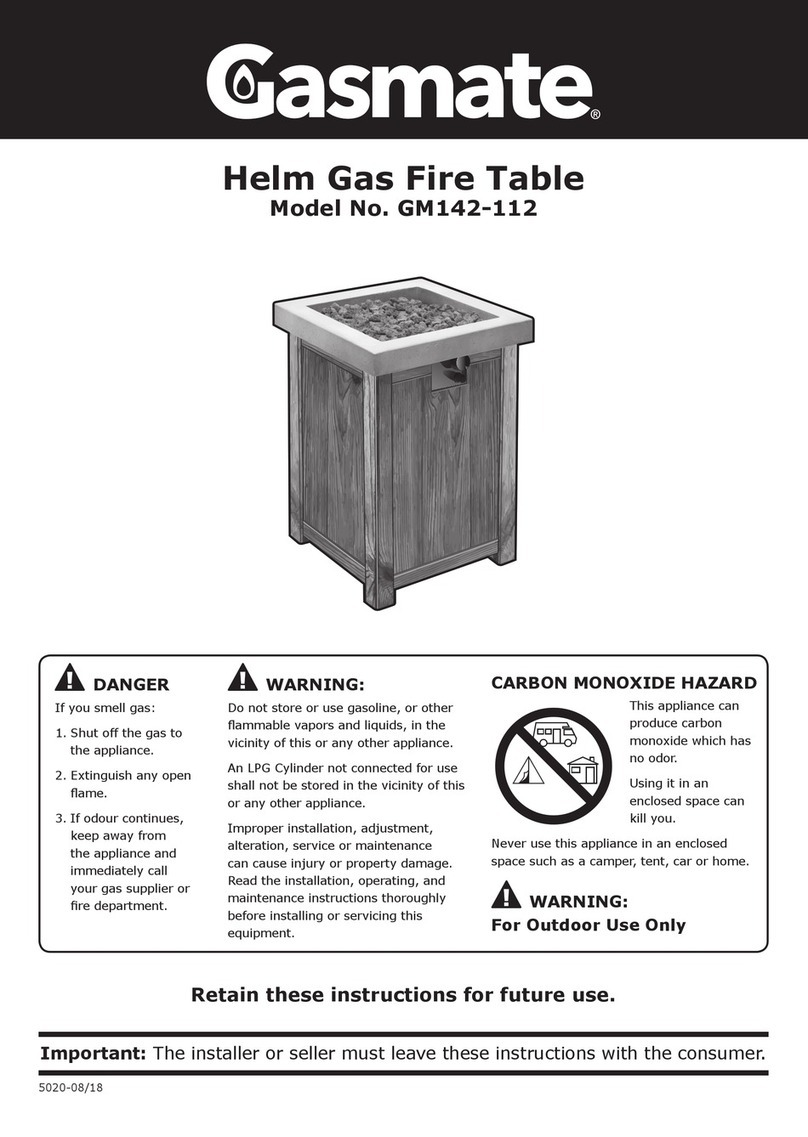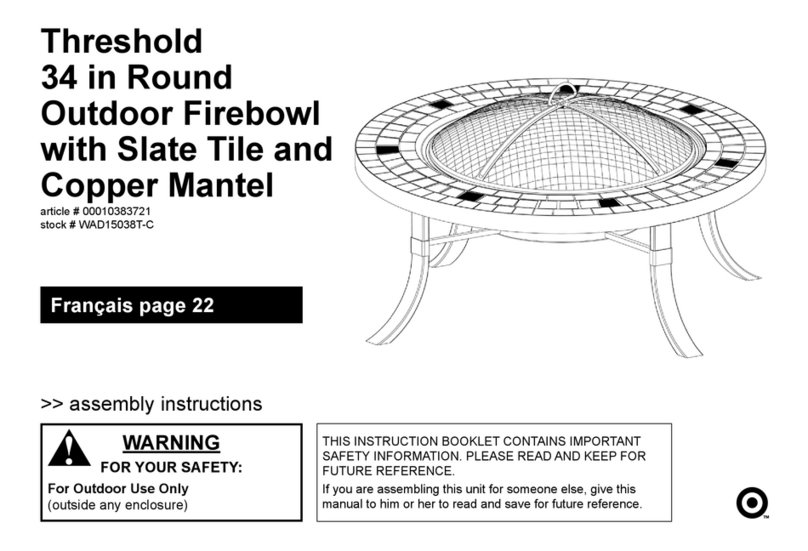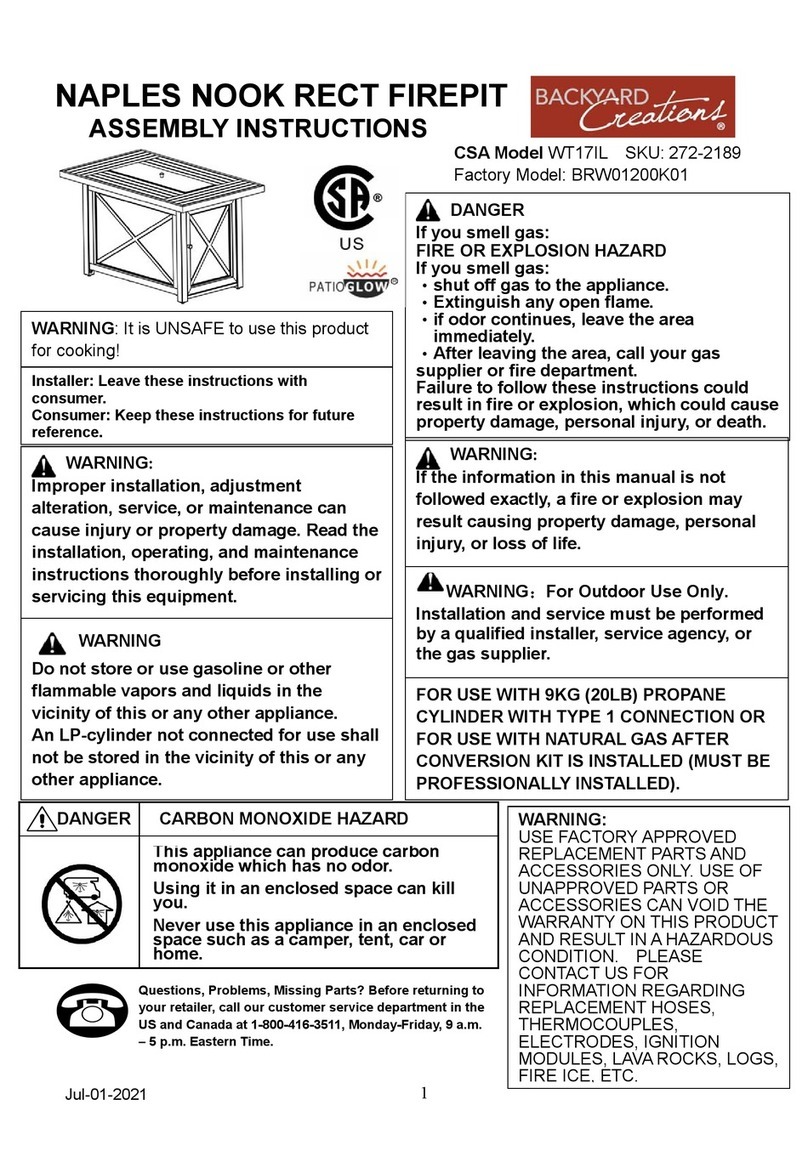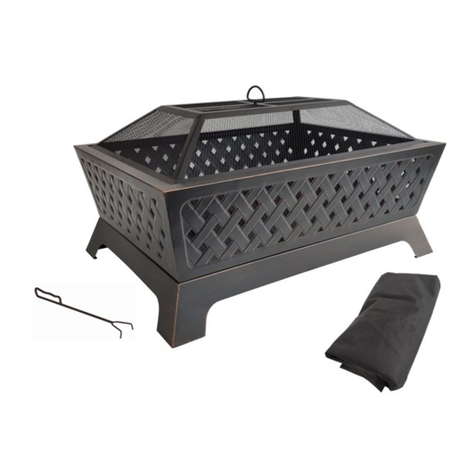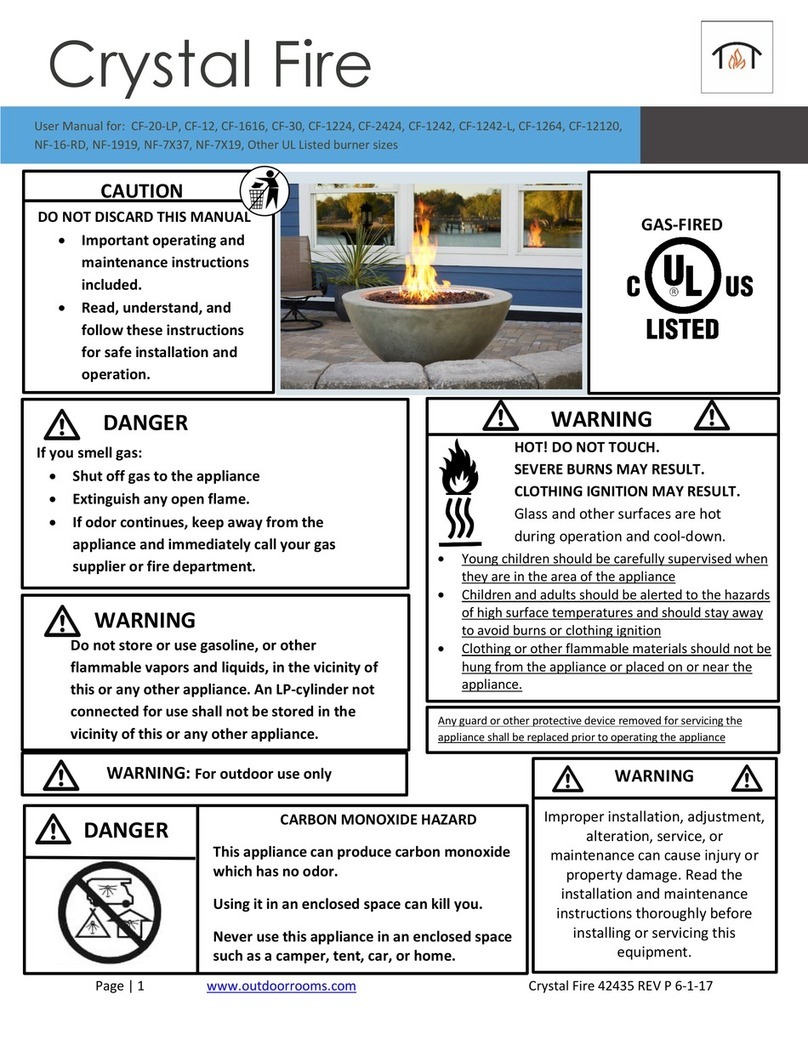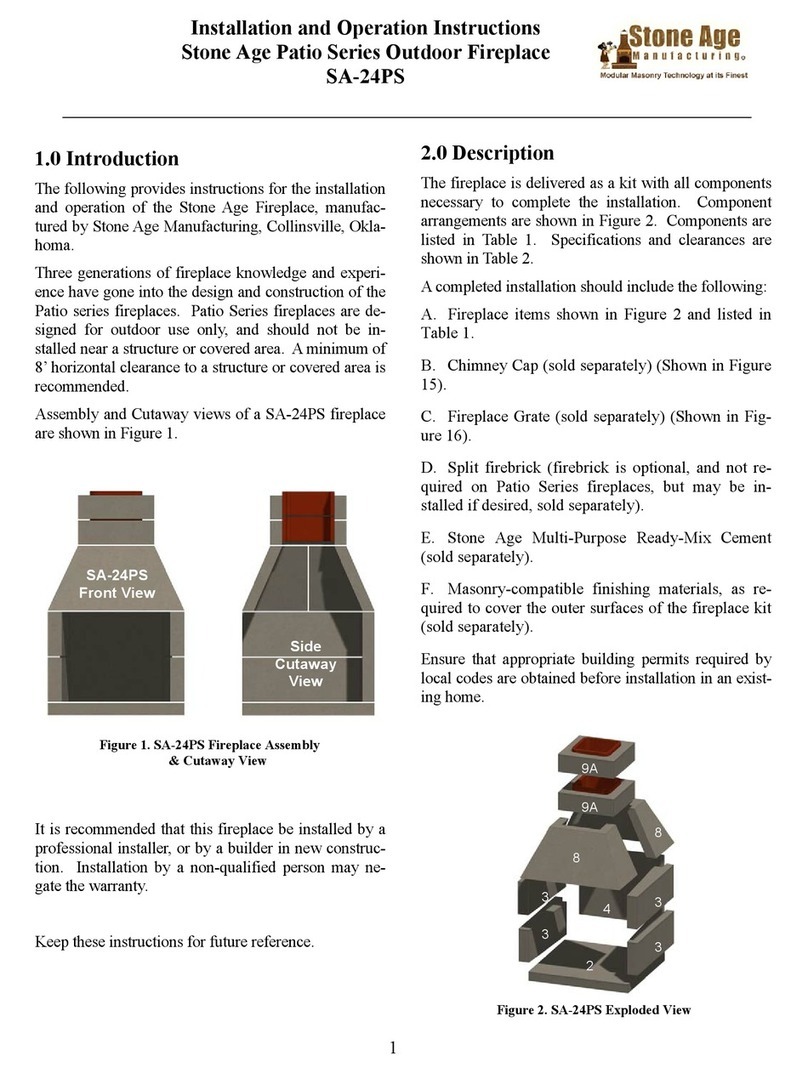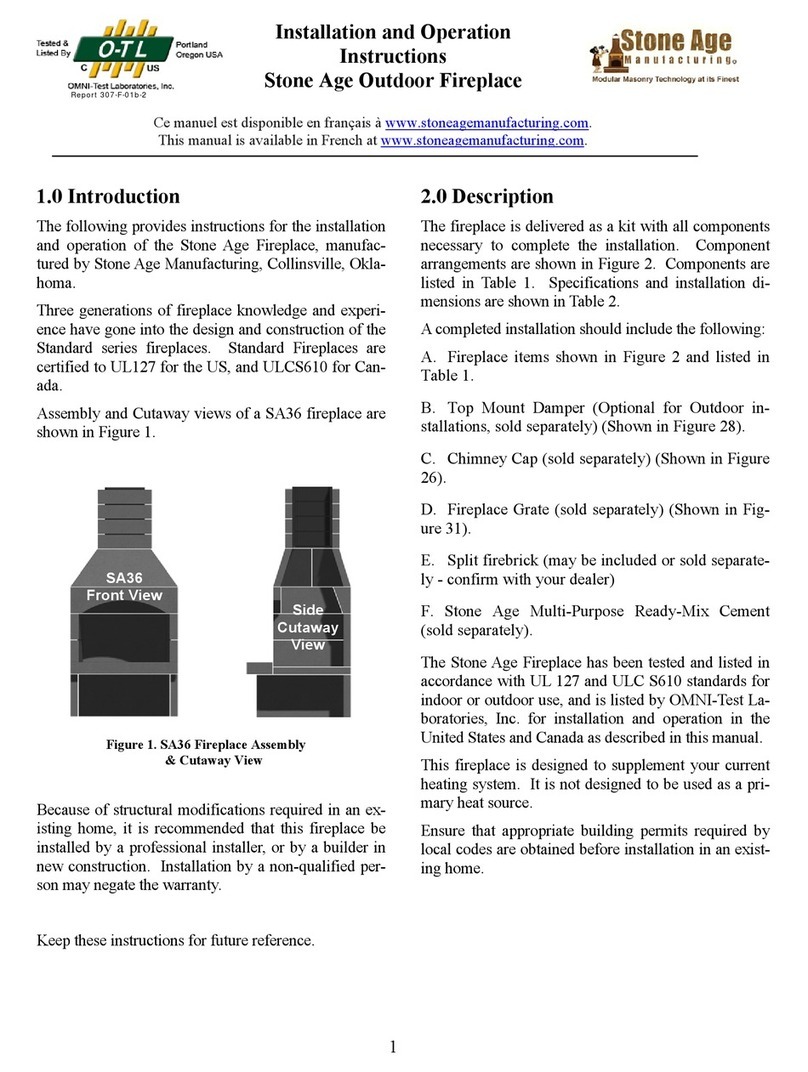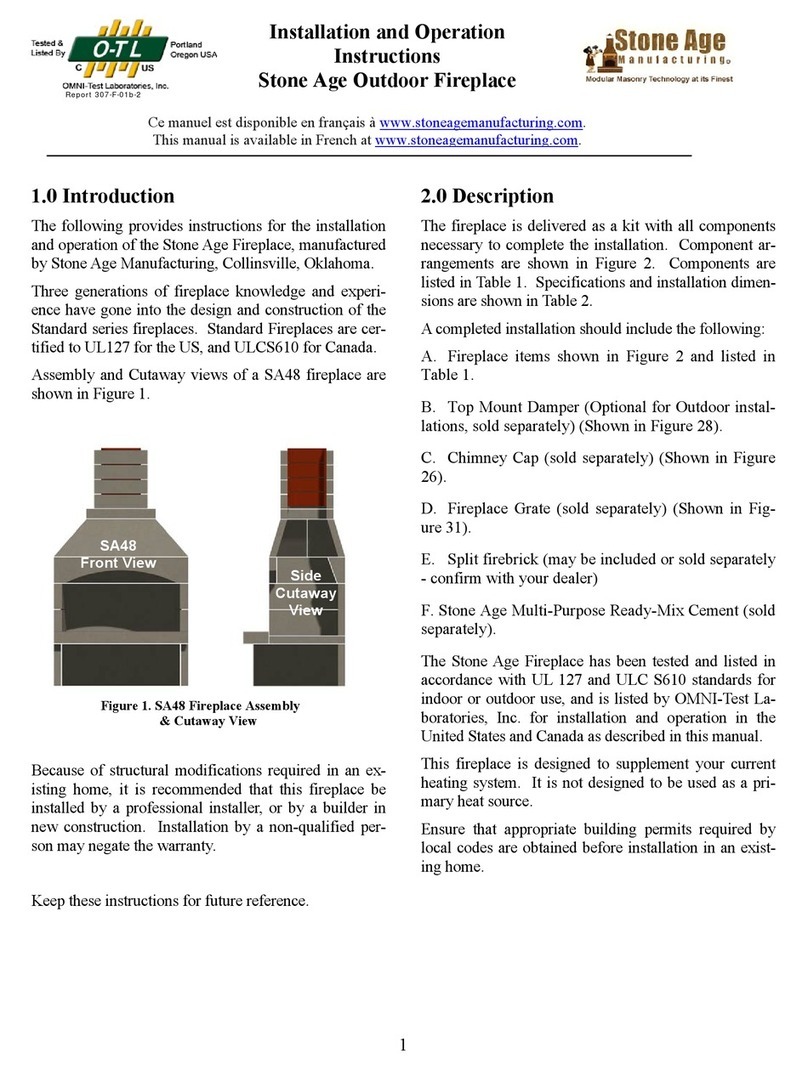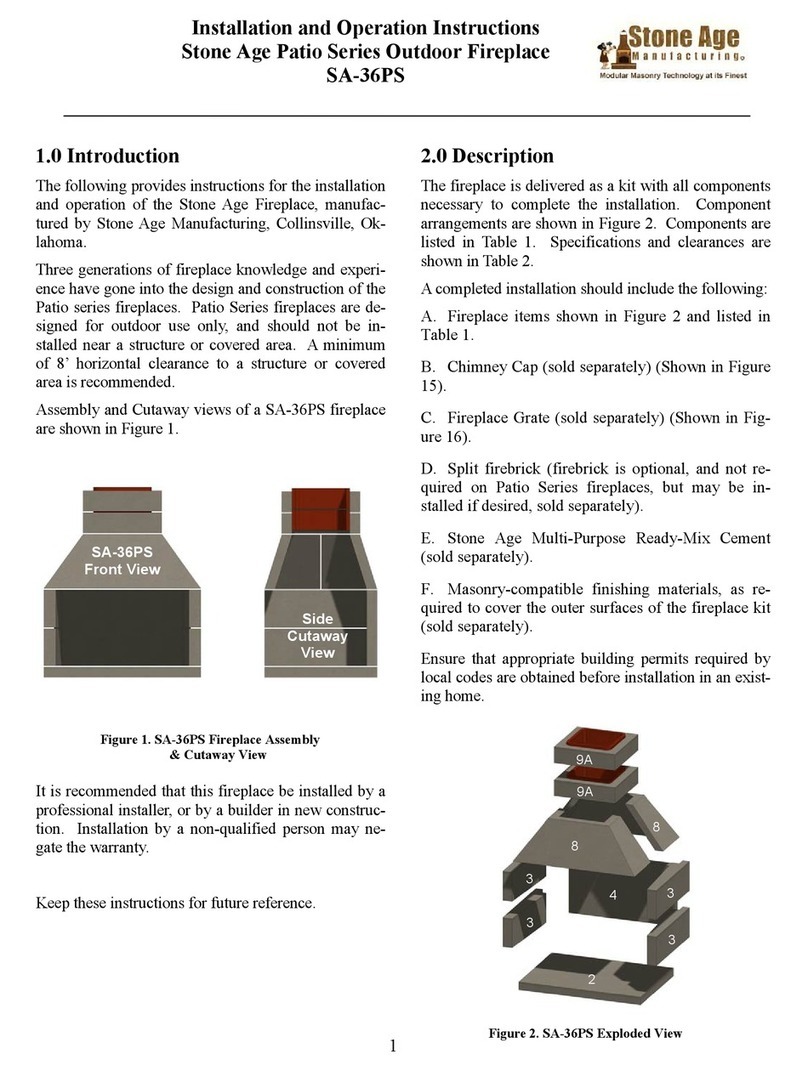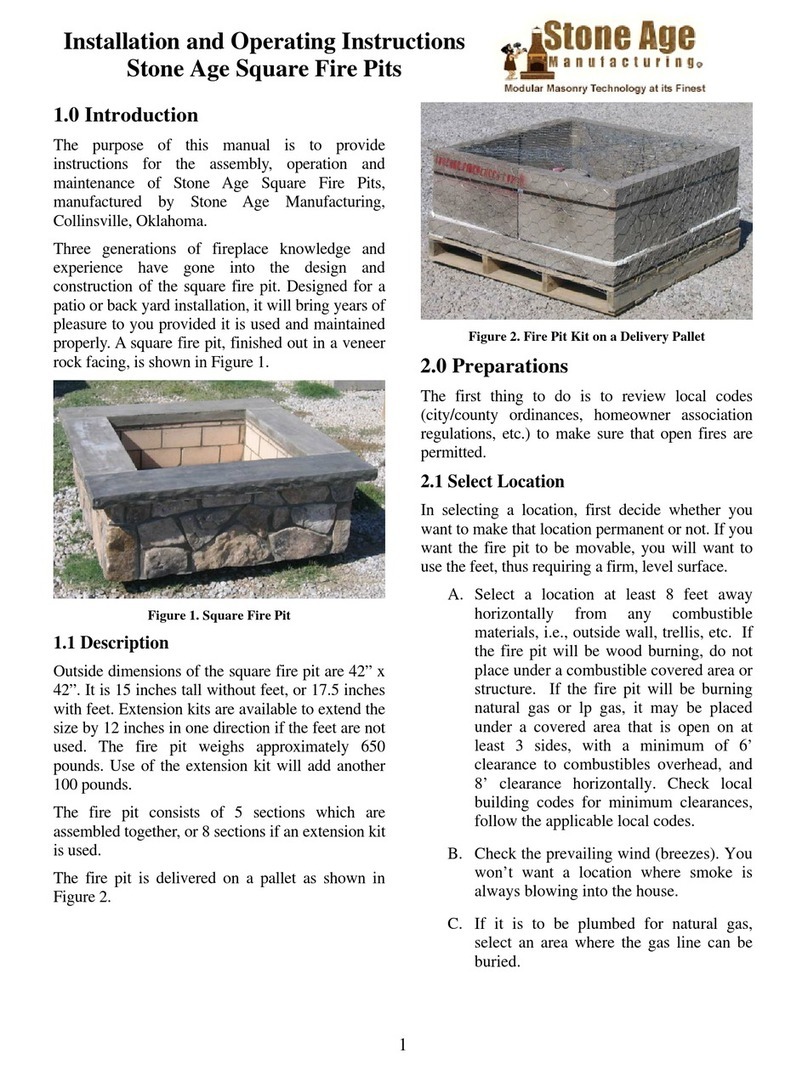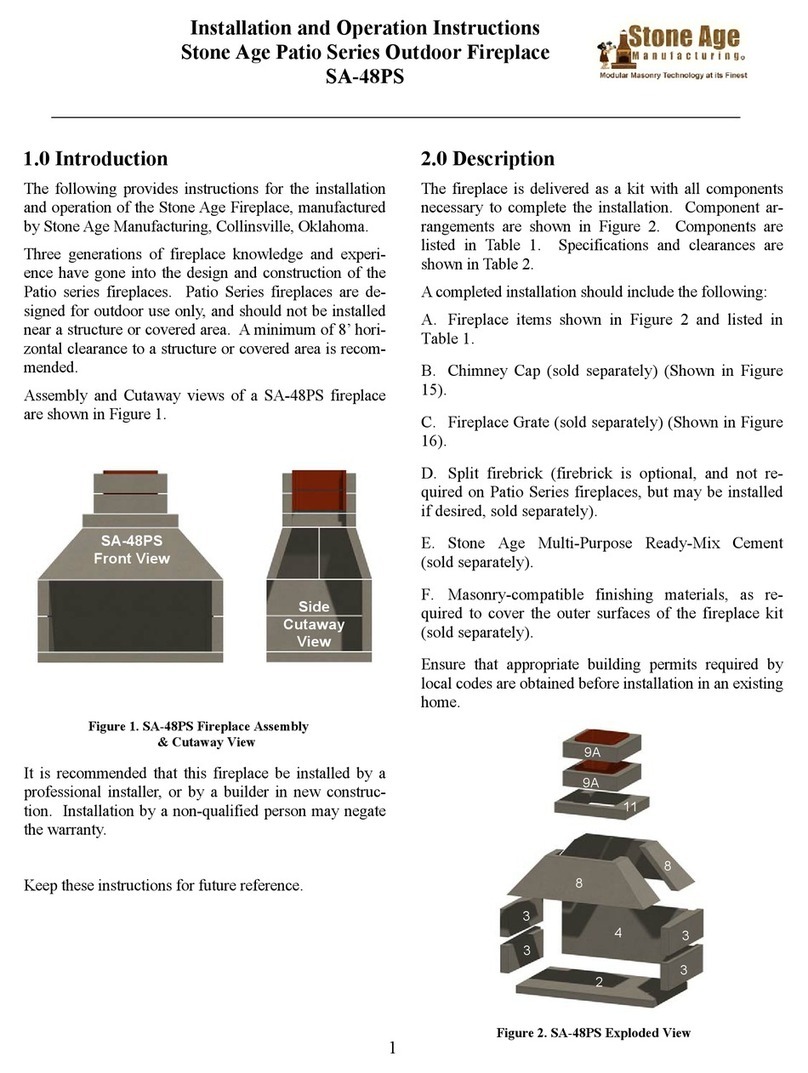
13
ing. It can be reopened once a draft has been created
through the chimney.
WARNING: NEVER USE GASOLINE,
GASOLINE-TYPE LANTERN
FUEL, KEROSENE, CHARCOAL
LIGHTER FLUID OR SIMILAR
LIQUIDS TO START OR
“FRESHEN UP” A FIRE IN THE
FIREPLACE. KEEP ALL SUCH
LIQUIDS WELL AWAY FROM
THE FIREPLACE WHILE IT IS
IN USE.
C. Do not overload the wood grate with wood. Three
to four logs on the fire at one time are sufficient.
Too much wood on the fire at one time can result in
“over firing,” and too much heat in the firebox, caus-
ing damage to the fireplace.
D. When lighting a fire in a cold chimney, a
downdraft may be created, letting a little smoke into
the room. To correct this, hold a wadded newspaper
in the firebox and light it. This will create an updraft
and clear the flue of cold air.
E. Remove any excess ash from the fireplace. Ex-
cessive ash may reduce airflow. Some owners prefer
to leave a small layer to insulate the cold refractory
brick below the grate, helping fire starting.
F. Open and close the damper to ensure it operates
properly. Leave it in the full open position when
starting a fire and while the fire is burning.
G. Center the grate over the bottom hearth of the
firebox.
H. Crumble several newspapers across the fire area
below the grate. Criss-cross kindling wood on top of
the grate, above the newspaper.
I. Lay three logs on the grate; two side by side and
the third in pyramid fashion on top. Split logs will
start faster. Ensure there is space between the logs
for air circulation. As the air is heated, it is drawn
upwards through the space between the logs, creating
more combustion.
J. Light the paper at both sides of the firebox.
Caution: The fireplace requires air for operation.
Ensure there is sufficient air so that other
fuel burning appliances are not starved of
combustion, ventilation, and dilution air.
K. Set the screen in front of the firebox to prevent
the escape of sparks and embers.
L. Ensure the fire remains centered in the firebox.
Don’t let it move to the front part. Move it back with
the poker.
M. Add wood to the fire as necessary.
CAUTION: Be extremely careful when adding wood
to the fire. Use proper fireplace tools and
wear gloves. Un-split logs will be less stable
and may be more likely to roll out of the
fireplace if not placed carefully on the log
grate.
6.0 Cleaning, Inspection and
Maintenance
As is the case with most other equipment, cleanliness
is the best maintenance practice and will contribute too
many hours of warmth and pleasure.
WARNING: DO NOT CLEAN THE FIRE-
PLACE WHEN IT IS HOT.
A. Creosote – Formation and Removal. When wood
is burned slowly, it produces tar and other organic
vapors, which combine with expelled moisture to
form creosote. The creosote vapors condense in the
relatively cool chimney flue of a slow burning fire.
As a result, creosote residue accumulates on the flue
lining. When ignited, this creosote makes an ex-
tremely hot fire. The chimney shall be inspected at
least twice a year during the heating season to deter-
mine when a creosote buildup has occurred. If a sig-
nificant layer of creosote has accumulated (3 mm or
more), it should be removed to reduce the risk of a
chimney fire.
B. Disposal of ashes - Ashes should be placed in a
metal container with a tight-fitting lid, and taken out-
side and placed on the ground, well away from all
combustible materials, pending final disposal. If the
ashes are disposed of by burial in soil or otherwise
locally dispersed, they should be retained in the
closed container until all cinders have thoroughly
cooled.

















